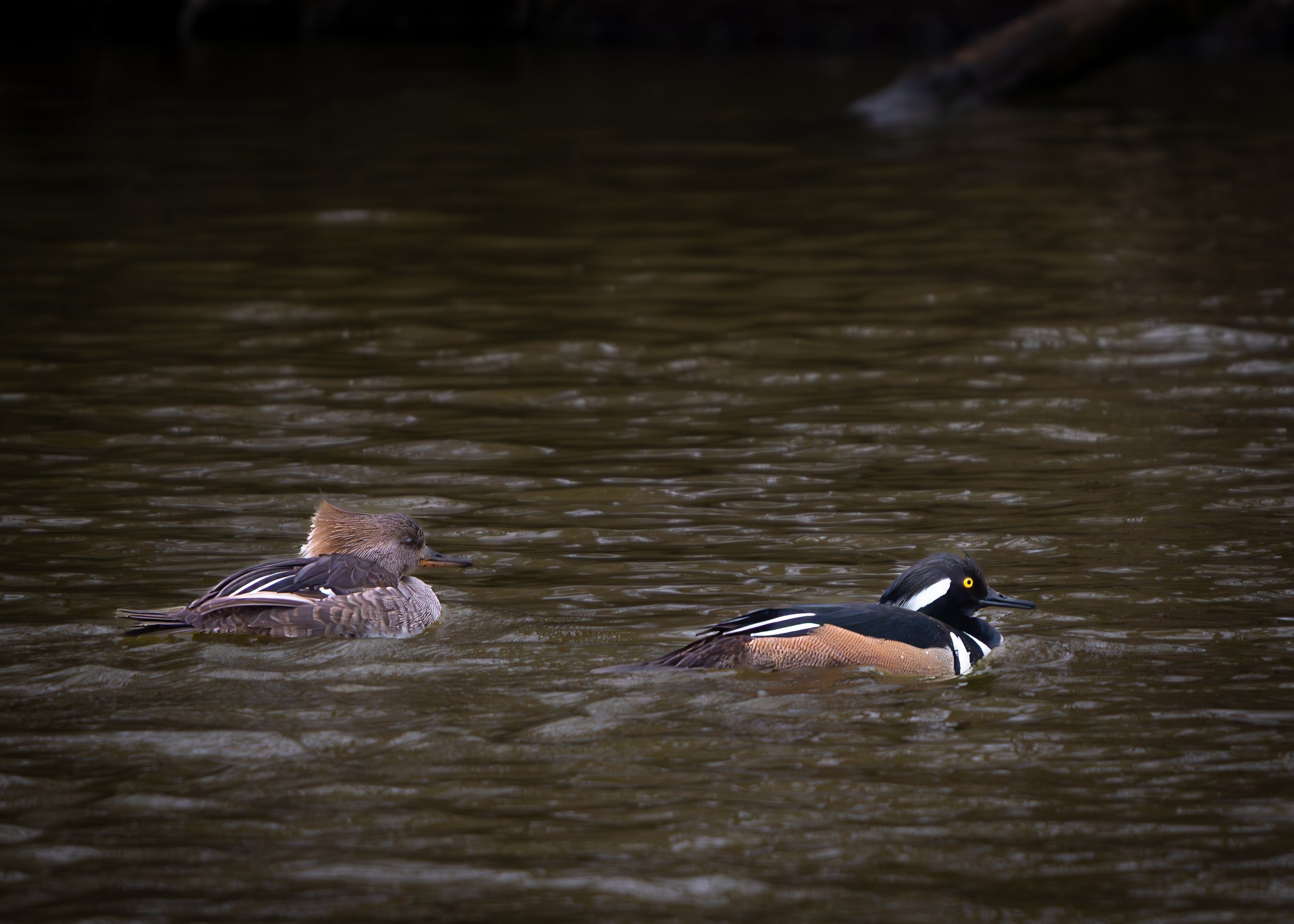Field Trip Recap: Douglass Park
by Joann Umeki
On March 23, Sammy Cabindol led a group of 13 birders on a walk through Douglass (Anna & Frederick) Park* in Chicago. The walk started out with a bang, as a pair of hooded mergansers greeted us from the lagoon. On the west side of the path, a pair of Pied-billed Grebes swam in the pond, as Ring-billed Gulls and Herring Gulls circled above us, with many landing on the fieldhouse roof.
Hooded Mergansers. Photo by Madhu Nukathoti, 3.23.25, Douglass Park
After only a few steps down the path, there were birds in every direction. Three Eastern Phoebes flitted in reeds near the lagoon, and two Brown Creepers crept in a nearby tree. A few steps more, and a Hairy Woodpecker, Downy Woodpecker, and Northern Flicker appeared high in the trees, while Song Sparrows foraged in the grass. There was so much bird action, and the walk had barely started!
American Robin. Photo by Madhu Nukathoti, 3.23.25, Douglass Park
On the east side of the lagoon, a pair of Mallards floated near the shore, and an American Robin was spotted in the grass ahead of us. Robin talk and trivia followed. Why do they sing so many hours before dawn? Why the strange scientific name, Turdus migratorius? Is the robin so common that they named it after a turd? Of course not. Sammy informed the group that “turdus” is the Latin term for a thrush. How disappointing.
Red-winged Blackbirds and European Starlings were abundant, but not a Rock Pigeon or House Sparrow in sight. After crossing the stone bridge at the north end of the lagoon, a pair of Wood Ducks flew out of a quiet nook, but unfortunately did not land within eye-shot. On our final check of the island in the lagoon, a Black-crowned Night Heron posed stoically in a willow at the edge of the water. It was a great way to end the walk. In all, 21 species were seen, with at least five assumed to be bonded pairs!
Black-crowned Night Heron. Photo by Haley Harris, March 23, Douglass Park
*Douglas Park was named after United States Senator Stephen A. Douglas in 1879. Douglas Park gained an extra s to become Douglass Park in 2020, in honor of abolitionists Frederick and Anna Douglass.




